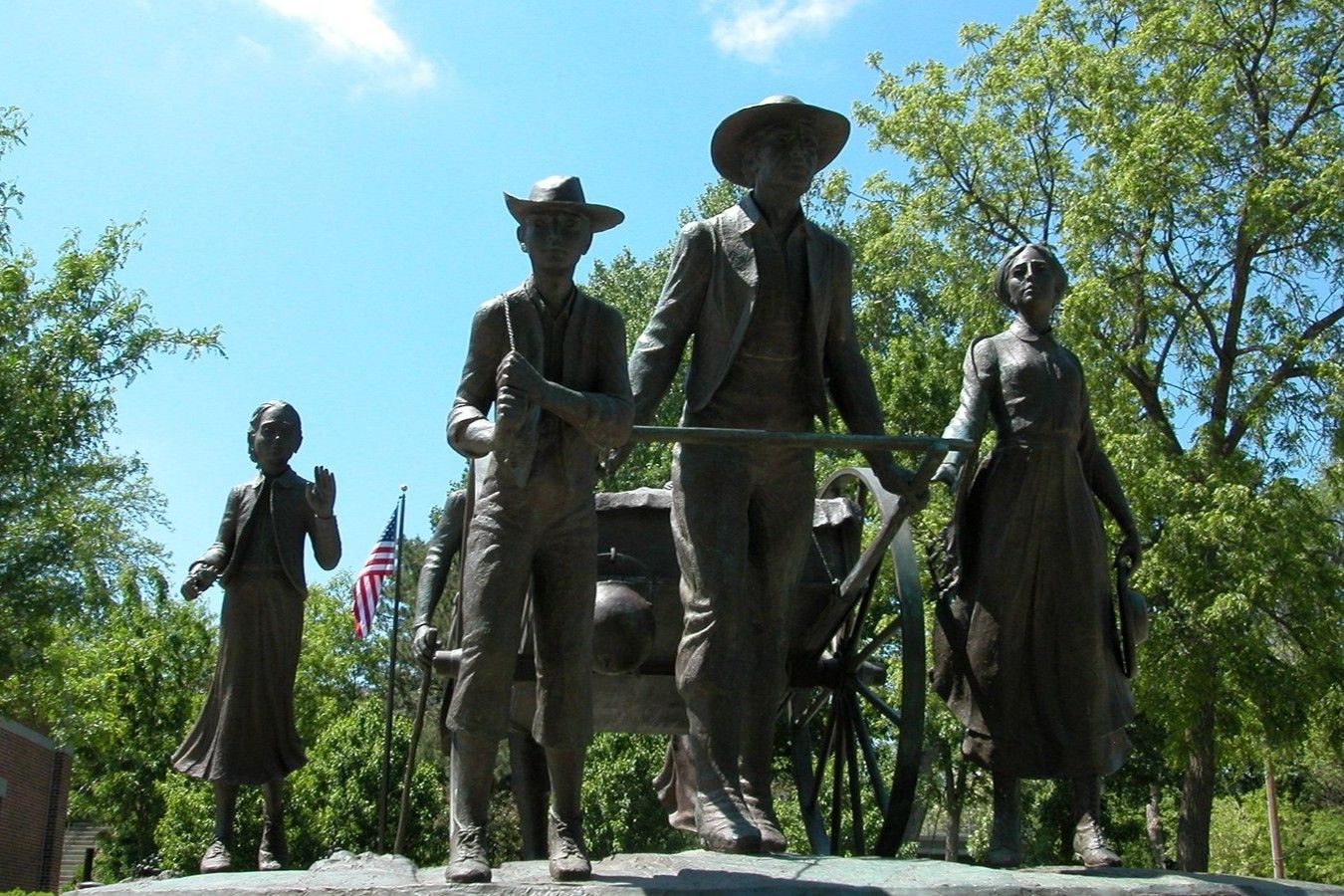Hidden Pioneer Paths Of Iowa’s Mormon Trail

Have you ever wondered about the Mormon Trail in Iowa? This historic path, traveled by thousands of pioneers in the mid-1800s, offers a glimpse into the past. Stretching across the state, the trail is dotted with landmarks, campsites, and stories of perseverance. Whether you're a history buff or just looking for a unique road trip, the Mormon Trail provides an enriching experience. From the banks of the Mississippi River to the rolling plains, each stop along the way reveals a piece of the journey. Ready to step back in time and explore Iowa's hidden pioneer paths? Let's get started!
Hidden Pioneer Paths of Iowa's Mormon Trail
The Mormon Trail in Iowa is a historic route filled with stories of perseverance, faith, and adventure. This trail, used by Mormon pioneers in the mid-1800s, is dotted with hidden gems that offer a glimpse into the past. Let's uncover some of these lesser-known spots along the trail.
1. Sugar Creek Camp
Sugar Creek Camp marks the starting point of the Mormon Trail in Iowa. Here, pioneers gathered in 1846 before embarking on their journey westward. Today, visitors can explore the serene landscape and imagine the bustling activity that once took place.
2. Richardson's Point
Richardson's Point is a significant site where the first deaths on the trail occurred. The area is marked by a small cemetery, a somber reminder of the hardships faced by the pioneers. It's a peaceful spot for reflection and understanding the sacrifices made.
3. Locust Creek
Locust Creek is where the pioneers faced one of their first major challenges. The creek often swelled, making it difficult to cross. Today, the site offers a picturesque view of the creek and surrounding nature, a stark contrast to the struggles of the past.
4. Garden Grove
Garden Grove served as a temporary settlement for the pioneers. They built cabins, planted crops, and prepared for the next leg of their journey. Visitors can explore the remnants of this settlement and learn about the resourcefulness of the early settlers.
5. Mount Pisgah
Mount Pisgah was another crucial stop where the pioneers established a semi-permanent settlement. The site includes a cemetery and a monument dedicated to those who died here. It's a place of historical significance and natural beauty.
6. Nishnabotna River Crossing
Crossing the Nishnabotna River was a daunting task for the pioneers. The river's unpredictable nature made it a challenging obstacle. Today, the crossing is marked by a historical sign, and the riverbanks offer a tranquil spot for visitors.
7. Kanesville (Council Bluffs)
Kanesville, now known as Council Bluffs, was the final major settlement in Iowa before the pioneers crossed into Nebraska. It was a bustling hub of activity, with supply stores and blacksmiths. Modern-day Council Bluffs retains much of its historical charm, with museums and landmarks to explore.
8. Winter Quarters
Winter Quarters, located just across the Missouri River in Nebraska, was where the pioneers spent a harsh winter. The site includes a visitor center and a cemetery, providing insights into the daily lives and struggles of the settlers.
9. Florence Mill
Florence Mill, near Winter Quarters, played a vital role in providing food and supplies to the pioneers. The mill has been restored and now serves as a museum, showcasing artifacts and stories from the trail.
10. Mormon Pioneer National Historic Trail Center
The Mormon Pioneer National Historic Trail Center in Council Bluffs offers a comprehensive overview of the entire trail. Interactive exhibits, artifacts, and educational programs bring the history of the Mormon Trail to life for visitors of all ages.
Discovering Iowa's Hidden Pioneer Paths
Exploring Iowa's Mormon Trail offers a unique glimpse into the past. Walking these paths, you can almost hear the echoes of pioneers who once journeyed through. Each stop along the trail, from Garden Grove to Mount Pisgah, tells a story of resilience and faith. The historical landmarks and interpretive centers provide a deeper understanding of the challenges faced by those early travelers. Whether you're a history buff or just love a good hike, the trail offers something for everyone. It's a chance to connect with history in a tangible way, making it more than just a walk—it's a step back in time. So, lace up your hiking boots, grab a map, and set out to uncover the hidden paths of Iowa's Mormon Trail. You'll leave with a greater appreciation for the journey and the people who made it.

